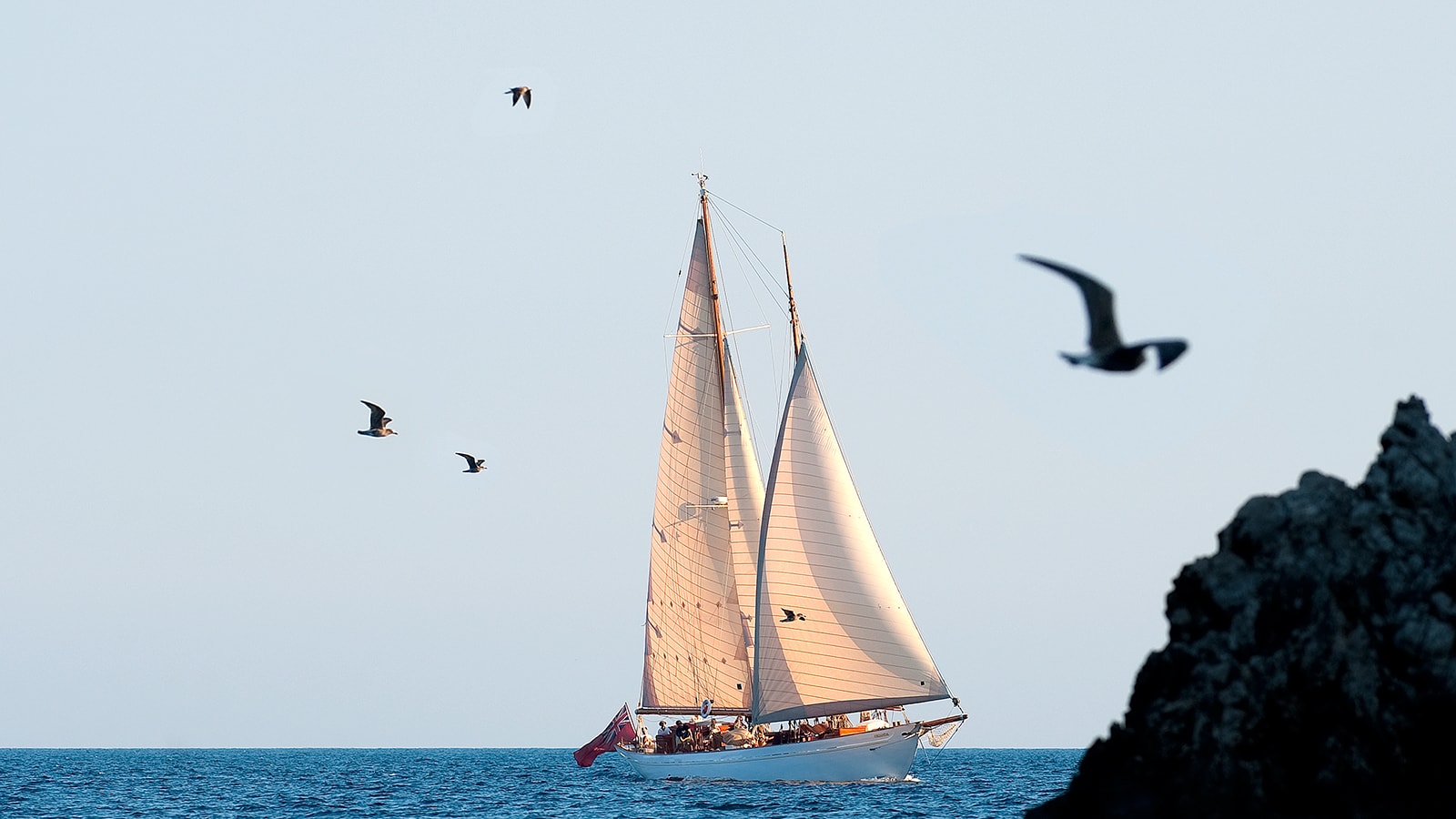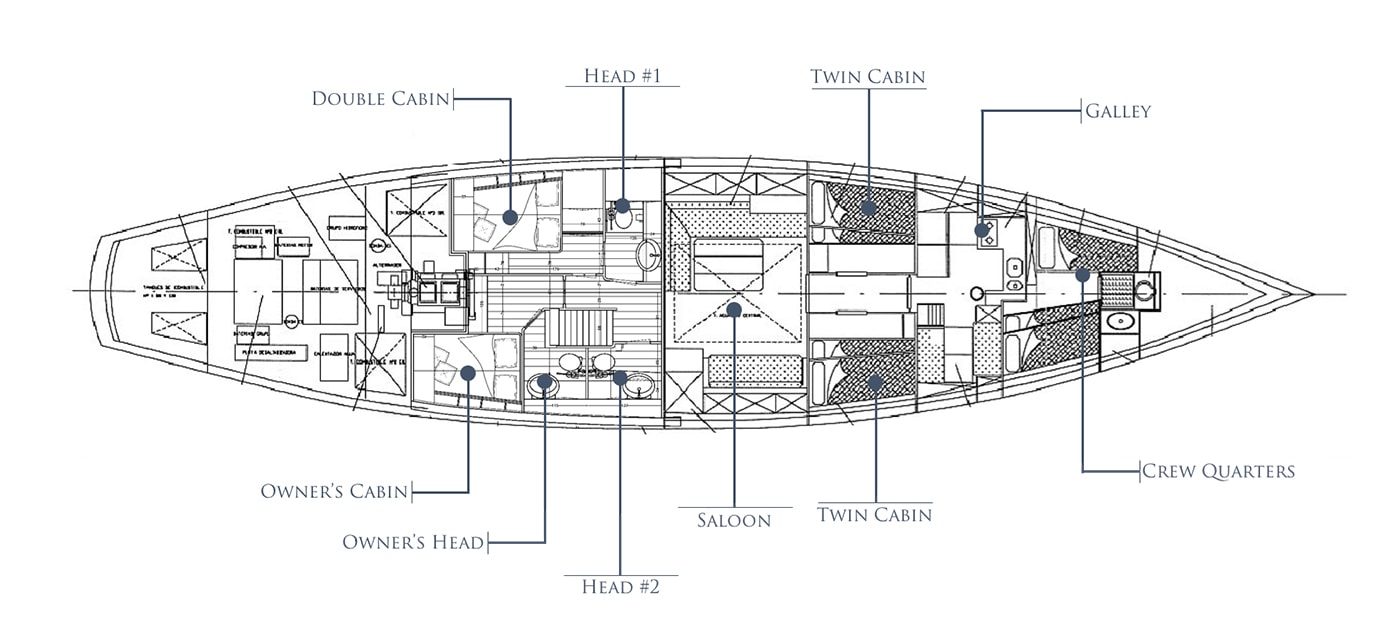Orianda is an 85ft (26 m) Bermudian staysail schooner built in 1937 by Oscar W. Dahlstrom in Carl Andersen’s shipyard in Faaborg, Denmark. She is constructed with a wooden hull.
Orianda was commissioned in the waning days of a bygone era, when elegance was an integral part of the supreme adventure under sail. Her history could easily be taken from a novel where Royals, military seizures, naval academies, and rock stars were all part of the plot. She has changed names four times, enduring WWII as well as surviving a fire. Many interesting characters have owned her, from a Greek ambassador to a songwriter receiving a rare Golden Record for the song he wrote on-board, which sold in excess of 1 million copies. She has sailed across many oceans, ranging from the North seas, in Denmark and Sweden, to the Atlantic where she lived in the Caribbean for 20 years, to the Mediterranean. Orianda is a regular participant on classic regattas, one being in the 1990’s at Nioulargue and is now a regular feature at the Voiles de St Tropez amongst other events.
Her fascinating history contributes to the aura of mystery and charm, ultimately enhancing her beauty and appeal.
Orianda can accommodate up to 8 guests, in 4 cabins; 2 double cabins each with an en-suite head and 2 twin cabins with a shared head. Orianda is staffed with 3 crew and offers all the comforts of a private yacht alongside all the modern safety devices and equipment available on modern vessels, without giving up the beauty and attention to details of the lavish 1930’s.
1930’s
The vessel’s original name in 1937 was Ragna IV, and according to the 1939 edition of the Lloyd’s registry in London, it was owned by Mr Ole Sundø.
The registry shows that Ragna IV was designed by Oscar W. Dahlstrom, a well-known Danish designer, who had conceived Ragna IV as a racing cruiser in 1937.
Orianda appears in most classic yacht publications and articles as a Staysail Schooner built for the Duke of Oresund. Whilst the Duke’s existence could not be verified, the existence of “Direktor” Ole Sundø, which sounds similar to “Oresund” could.
The boat was completed in 1938 by Carl Andersen’s shipyard in Faaborg, Denmark and had appeared in the registry with the exact same specifications of the present day Orianda, confirming beyond doubt that this is the same yacht.
The late 30s marked a difficult time for Denmark, culminating with Operation Weserubung, the code name for the Nazi invasion of Denmark and Norway. Denmark was of strategic importance to Germany in that it was seen as a staging area for operations in Norway, but also, due to its border with Germany which needed to be controlled in some way. Given Denmark’s position in the Baltic Sea the country was also important for the control of naval and shipping access to major German and Russian harbours.
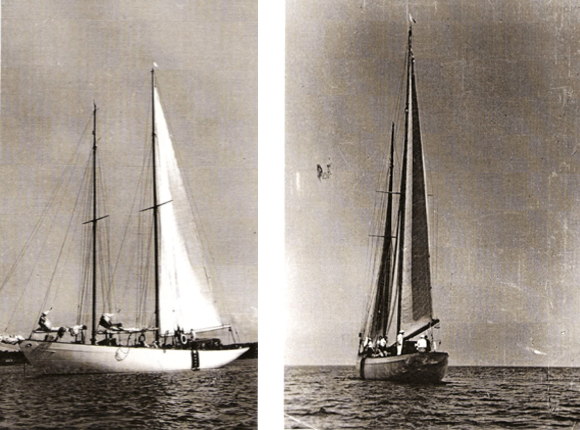
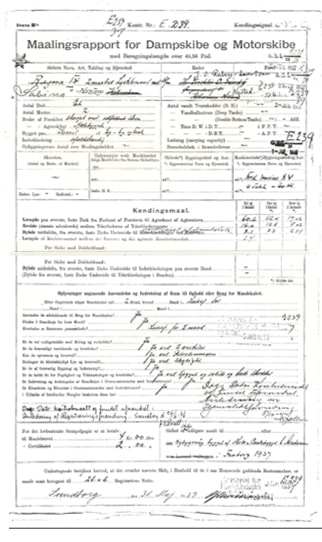

1940’s
Ragna IV was found by the Baron Johan Otto Raben-Levetzau in 1944, in a state of disrepair after being seized by Nazi forces and ultimately abandoned on the shores of Denmark, without her masts or rig. Soon after she was sold by Ole Sundø to the Baron.
After being acquired, Ragna IV was taken for a major refit in Svendborg, a small port city around 30km from Faaborg, where she was originally built. The masts that had been taken from the boat to support the war effort, were replaced with new wooden masts carved from some of the rarest trees of Aalhom Castle in Denmark, the Raben-Levetzau’s Danish Estate.
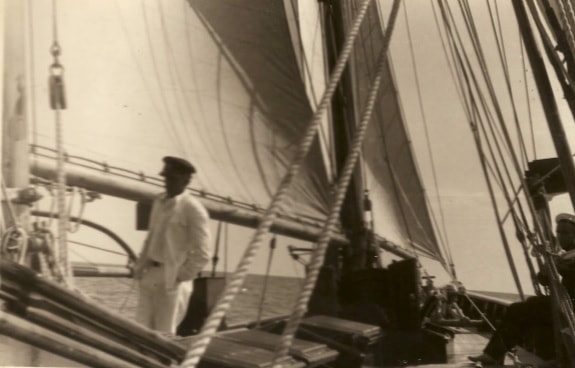
1950’s
Continuing to be registered in Copenhagen, she sailed through Denmark with the name Ragna IV until 1952, when the Baron Raben-Levetzau took her to Sweden. With the “Swedish period” came a few changes for Ragna IV. Her hull was painted navy blue and was re-registered at the Royal Swedish Yachting Club with the name Sabina registered in the port of Nysted.


Sabina was sailed by the then Captain, Mr Mathieson, with his crew of three to the south of France in order to commence a charter activity. Sabina then explored the south of France until 1960, when the late Baron J.O. Raben-Levetzau sold her to the Greek Consul General in Sweden, Stergios C. Souyouldjoglen.

1960’s
According to the late son of Johan Otto Raben-Levetzau, Sabina was sailed from France to Germany for a significant refit. Whilst her original Staysail Schooner rig was maintained; her masts were once again changed to steel as they remain to this day.
According to a direct source, Mr Christoforos Stratos, Sabina was sold to his father-in-law, Mr Souyoultzoglou (Greek Diplomat) in 1960/1961 when he and Mr Cristoforos Stratos’ grandfather travelled to Cannes to see Camper & Nicholson to buy a new yacht, just having sold his previous one. Initially, the owner John-Raben-Levetzau said she was not for sale, however a week later, Mr Souyoultzoglou was contacted by Camper & Nicholson and was asked to make an offer, because the Baron had changed his mind. She was therefore purchased on the spot for £30,000.00.
During the ownership of the Greek Diplomat, the yacht was often in Greece with pictures of her moored in the small port of the island of Hydra, in the South Peloponnese and taking part in the Aegean Boat Rally with pictures of her sailing between the island of Spetses and the mainland Porto Heli, where she still sails today.
The family was very social and usually sailed with numerous friends from Greece to Sweden. The yacht was sold around 1969 to a Mr Draikis, a senior executive from Raleigh Brothers, who eventually sailed her to the South of France.
1970’s
It is also understood that subsequent to the “Greek Period” she was sold in Marseille to a Frenchman, named George Le Bihan who renamed her “Aloa Ohe”, which we are told has the meaning of “Fair Winds” in Polynesian.
Once she reached Tortola in the British Virgin Islands, “Aloa Ohe” was sold to a French couple who, we understand, was inspired by the name Orianda, which they had encountered during a visit to “Orianda House” in Crimea and decided to adopt this name for the Yacht. Thus, in 1976, (the future “Orianda”) took part in the celebrations of the bicentenary of the independence of the Caribbean States which took place on the Hudson river in New York, USA. Orianda represented the Caribbean states. Not much more is known of this period of the yacht’s life other than the fact that the owner was a relatively well known filmmaker in France. We are told that Orianda continued to charter in the British Virgin Islands together with Manda and Panda, and these vessels were the only well sized yachts available for charter in the Caribbean during those years. Manda and Panda no longer exist.
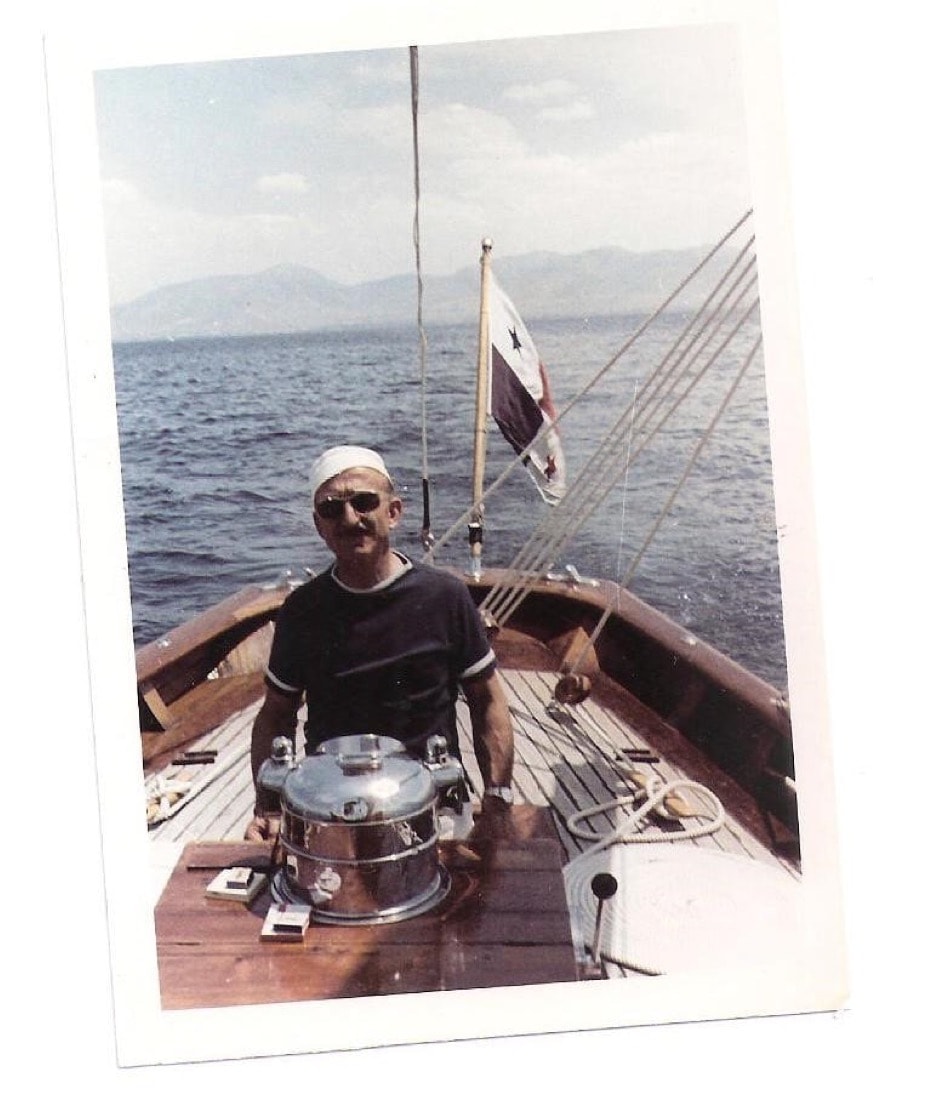
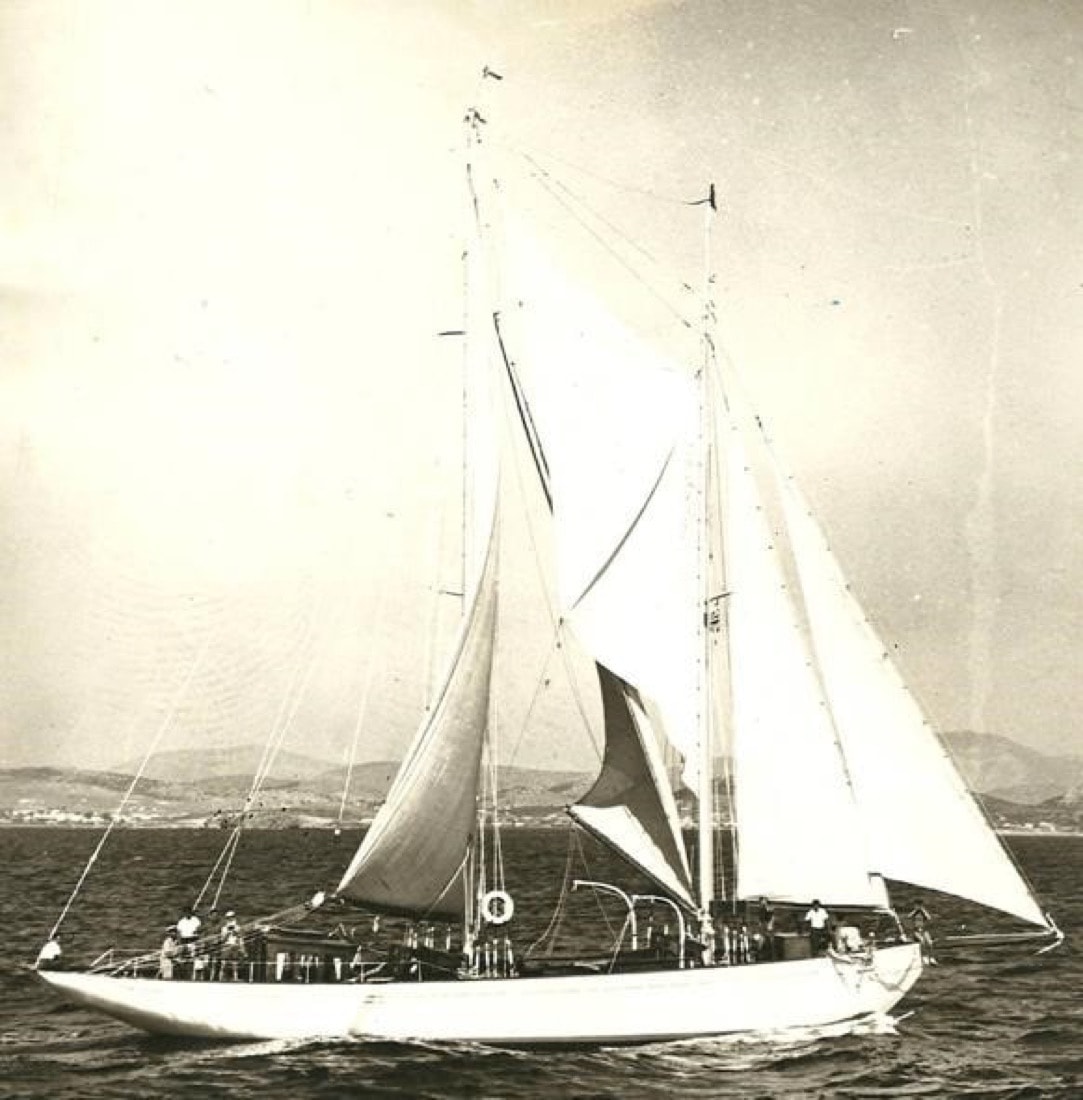
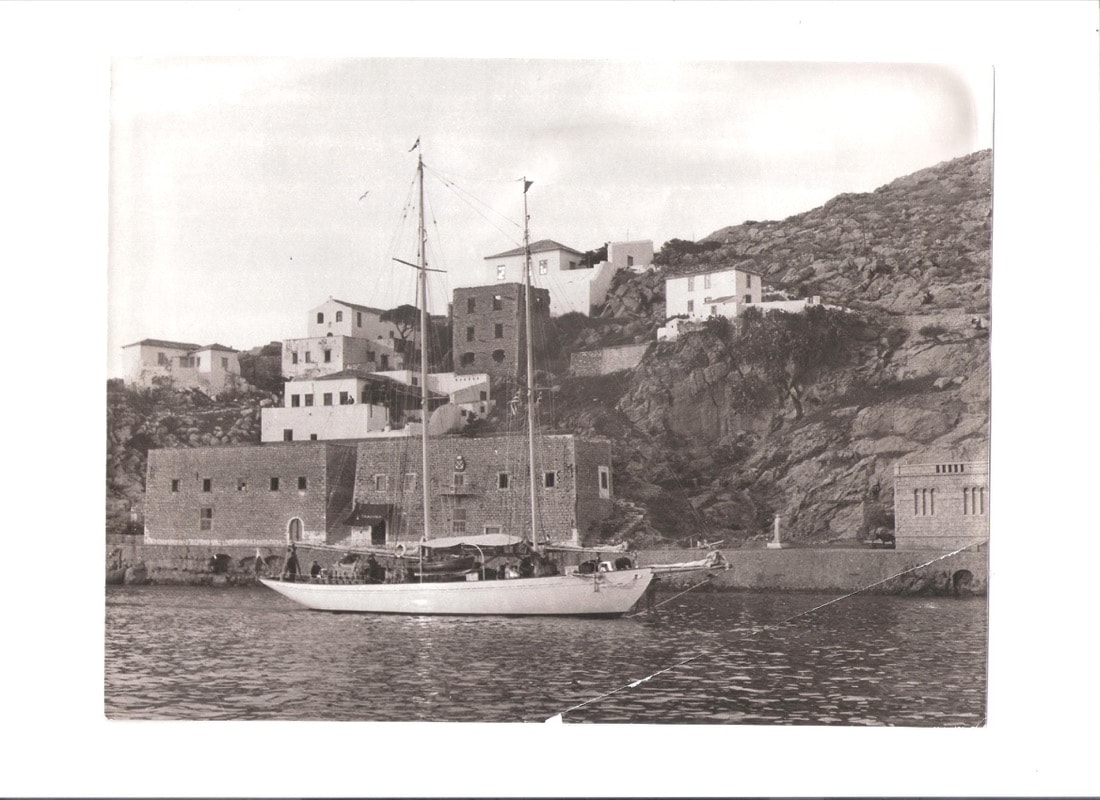
1980’s
It isn’t until 1981 that the vessel reappears in Tortola, British Virgin Islands, renamed Orianda and is now owned by another Frenchman, this time from from Marseille. Most likely, a broker.
In 1981 Orianda was sold by her French owners to Neil Peart, lead drummer of the popular Canadian rock band called RUSH.
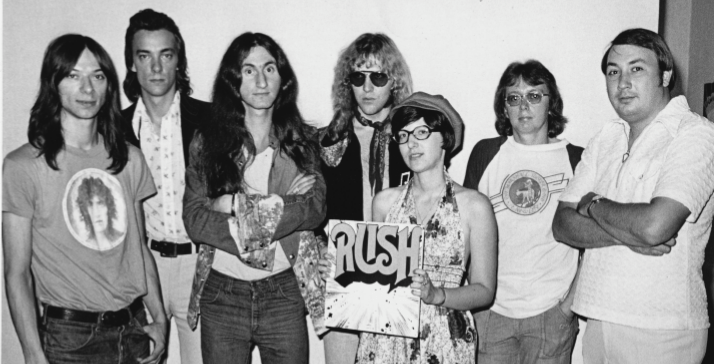
As stated in Neil Peart’s autobiography “Roadshow” and in subsequent correspondence, “My friends and I bought Orianda from an old Frenchman in Antigua, and I know our Captain Mike tried to track down some history, but didn’t come up with much — just the Norwegian connection, and that the boat had originally been based in the Mediterranean. During my time of ownership (I’m guessing, but roughly around 1981 - 1987), we were mainly in the British Virgin Islands, then towards the end, in Fort Lauderdale and Newport (seeking a buyer!).”
Taken from Neil Peart: “We had been tracking up the Sir Francis Drake Channel most of the day, on a leisurely zig-zag course to Virgin Gorda. At the wheel was our stalwart guest helmsman, Geddy, with Captain Mike and myself reclining in the stern and offering directions. We all watched the pennant halfway up the starboard shrouds, gauging our attitude to the wind. Up forward, First Mate Keith and Deck Steward Tom stood by the sheet for the Yankee jib, ready to wrestle it across the deck for the upcoming tack.
Captain Mike decided that we were close enough to land now to make the manoeuvre, so that if we ran out of wind he could walk to shore! He gave the helmsman his instructions:
“Okay, call out ‘prepare to come about’, and spin the wheel hard over to starboard.”
“That’s right, right?”
“Right!”
“prepare to come about”
Captain Mike laughed his best “dirty old sailor” laugh; “They’ve got to hear you up there, YELL it out!”
“oh … PREPARE TO COME ABOUT!!!”
“Better” …
Last night Geddy played me some of the things he had been working on at home. He had an electronic instrumental that would become the basis for “The Weapon”, a new extended intro for “Vital Signs” live, and a couple of other ideas that we haven’t yet used.
That night as we lay at anchor in Virgin Gorda, Geddy and I went down below after dinner, and I showed him some of the work that I had been doing. I had written “The Analog Kid” as sort of a companion piece to “Digital Man”, which had been written last fall up at Le Studio. He liked it, and we discussed different ways it could be treated musically. As we often do, we thought it would be interesting to take the opposite approach to what the lyrics would suggest; make it a very up-tempo rocker, with some kind of a dynamic contrast for the choruses. We also looked at a rough version of “The Weapon” that I had put together, and agreed that it would need some more work. He told me what he liked, and what he didn’t like, and gave me some good points to go to work on. We put an end to the “shoptalk” and went back to our holidays.”
Peart and his friends owned the boat until 1987, when she was sold to Mr Peter Phillips, in Tortola, British Virgin Islands for a reported, £150,000.00.
A day after Mr Phillips purchased Orianda, her stern caught fire, “She was at anchor in the harbour of West End Tortola. The party had just gone ashore and the next thing, everyone in the bay is charging across to Orianda with their buckets and fire extinguishers. Fortunately, the hatches were all open so much, that the fire, which had started over the main engine beneath the deckhouse, was funnelled out but it lipped up through the main companionway, the mainsail caught and the molten synthetic sailcloth dripped down on the deck to run all over the place. Being in the heat of the fire, the fuel tanks were in serious danger of exploding and, in the end the skipper ordered everyone off the boat.
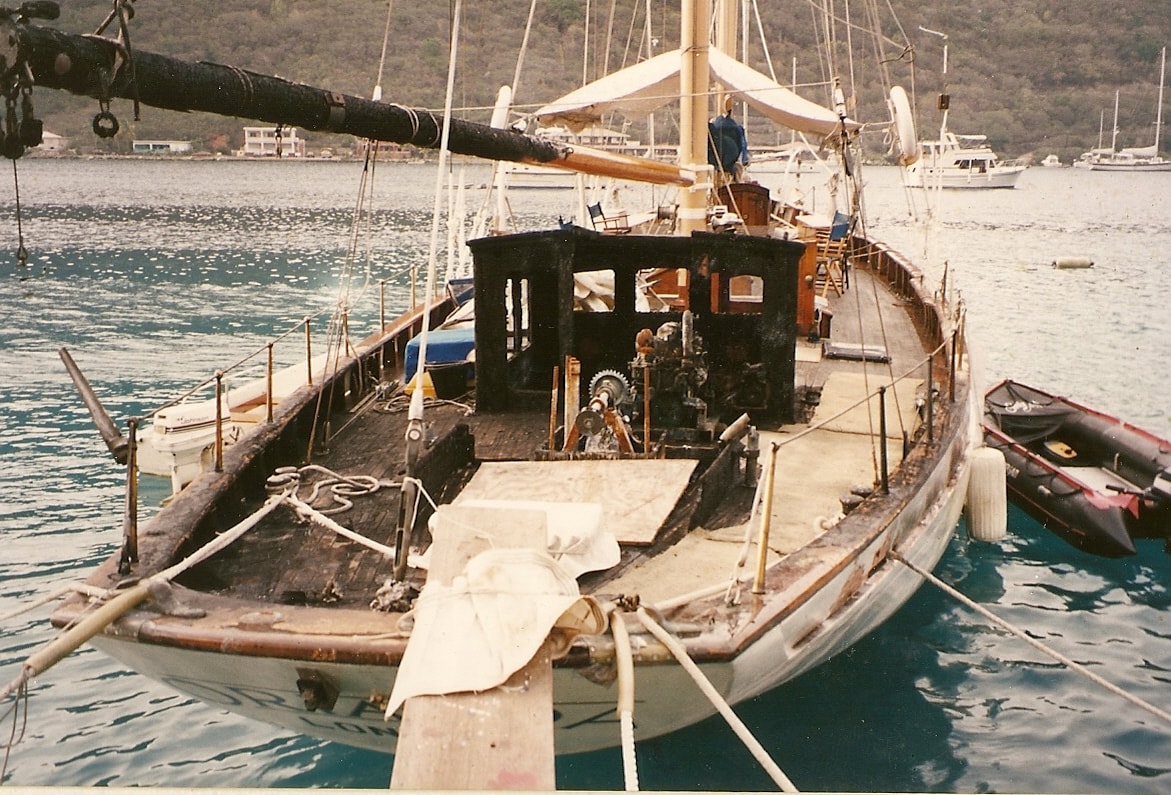
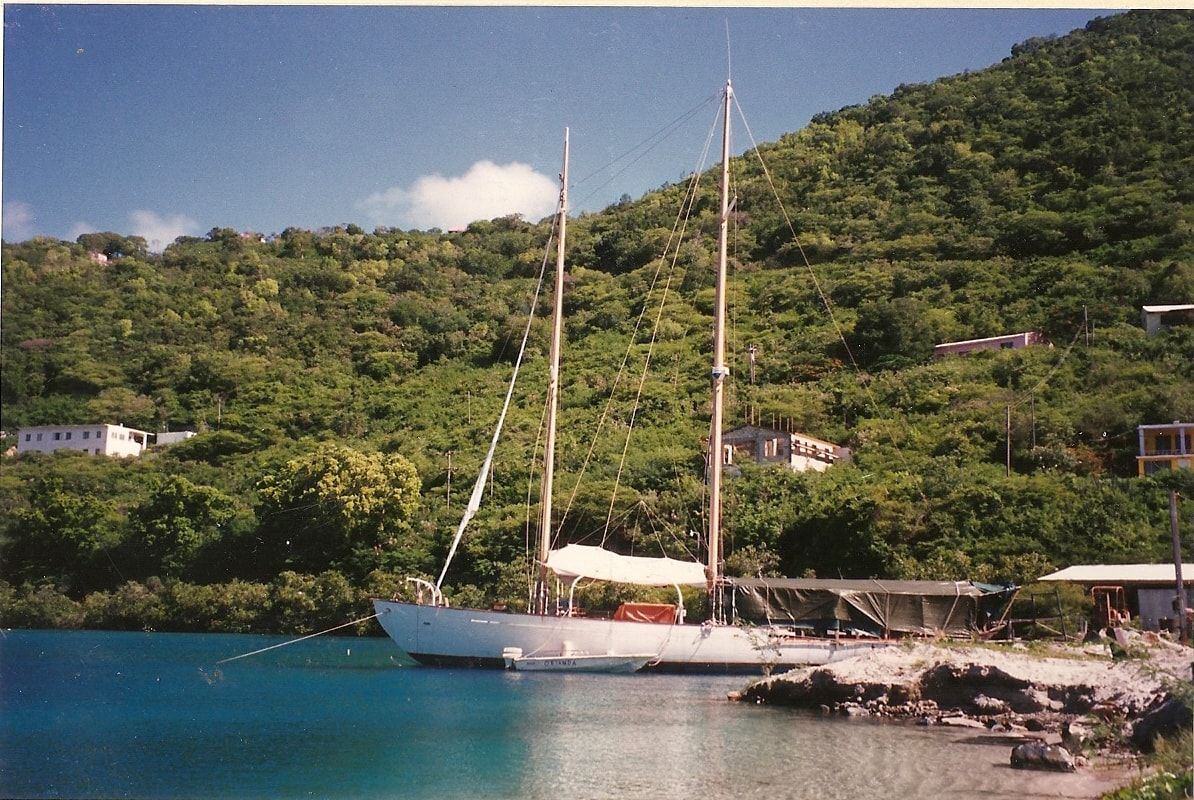
But Orianda had numerous friends in the British Virgin Islands, she represented them during the American Bicentennial celebrations in New York, and there were a couple of very determined West Indian guys who just wouldn’t give up. They formed a chain of buckets and fire extinguishers and went on fighting. In the end, they saved her, the tanks didn’t explode and the fire was eventually put out. She was in a really sorry state, apparently gutted from just forward of the pilot house aft. Within two days I had gone from being the proud owner of a classic yacht to a man with a nightmare problem”.
Peter was left with only a partial cover from the insurance. In order to raise the balance to restore the boat, he threw a fund-raising party on board and was able to raise sufficient funds to save the boat. The restoration took approximately five months with the workforce at times counting as many as sixteen people. Orianda was restored to her former glory.
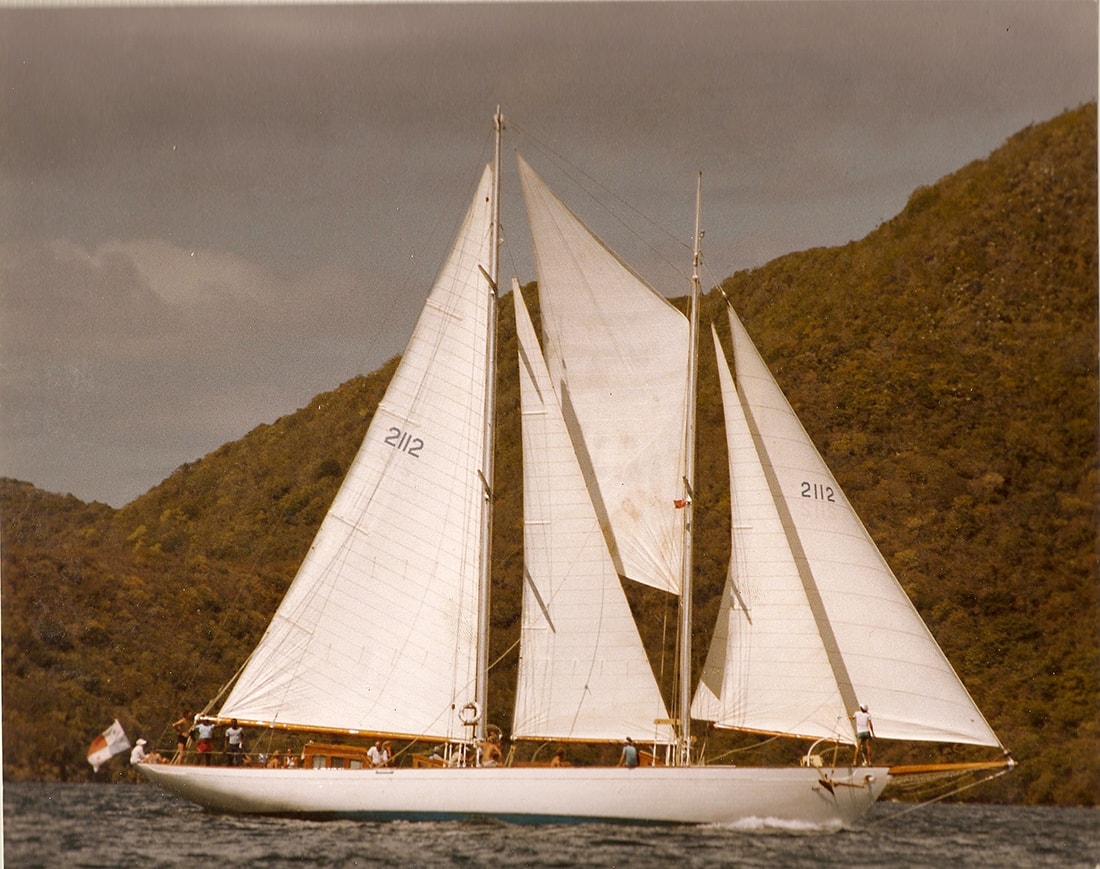
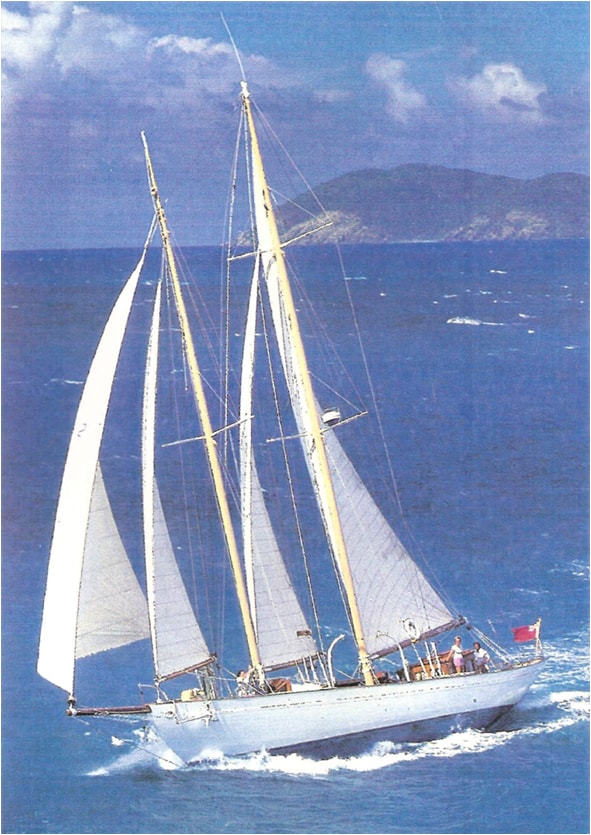
2000’s
During the Bellnoch’s ownership, many important changes were carried out to the deck and to the hull. For almost twenty years the Bellnoch’s enjoyed Orianda and in 2008, she participated in the main Spanish Classic Yacht Regatta in Valencia.
In June 2009, the current owners acquired Orianda, from the Bellnoch’s after having sailed the boat from Spain to Italy, and later to Greece for the summer season. In October 2009, at the end of her first season under her new ownership, Orianda was brought to the Roman shipyard “Tecnomar” in Fiumicino, Italy for a complete restoration.- Her current owners are firm in their passion for classic yachts and their endeavour to continue to add chapters to the intriguing history of a vessel that has survived a war, been ravished by fire, trained seamen in Germany, represented other nations in the U.S. bicentennial and which, to this day stands as a proud testament to the achievement of its designers, builders and the people who have looked after her throughout her history.
In addition, between 2015 and 2017, Orianda benefitted from a second significant refit where all of her equipment was overhauled, and works were carried out to her stern and her bow, her engine and sails, and most importantly, she was given a new bridge and deck. Orianda is probably in her best shape since 1937.
1990’s
During Mr Phillips’ ownership, he had some, “great adventures in the Caribbean, UK and the Mediterranean (Classic Regatta’s) with Orianda”. He conducted a fair amount of work on her, including new Decks, Pilot House, Machinery, Systems, Spars and Sails for starters.
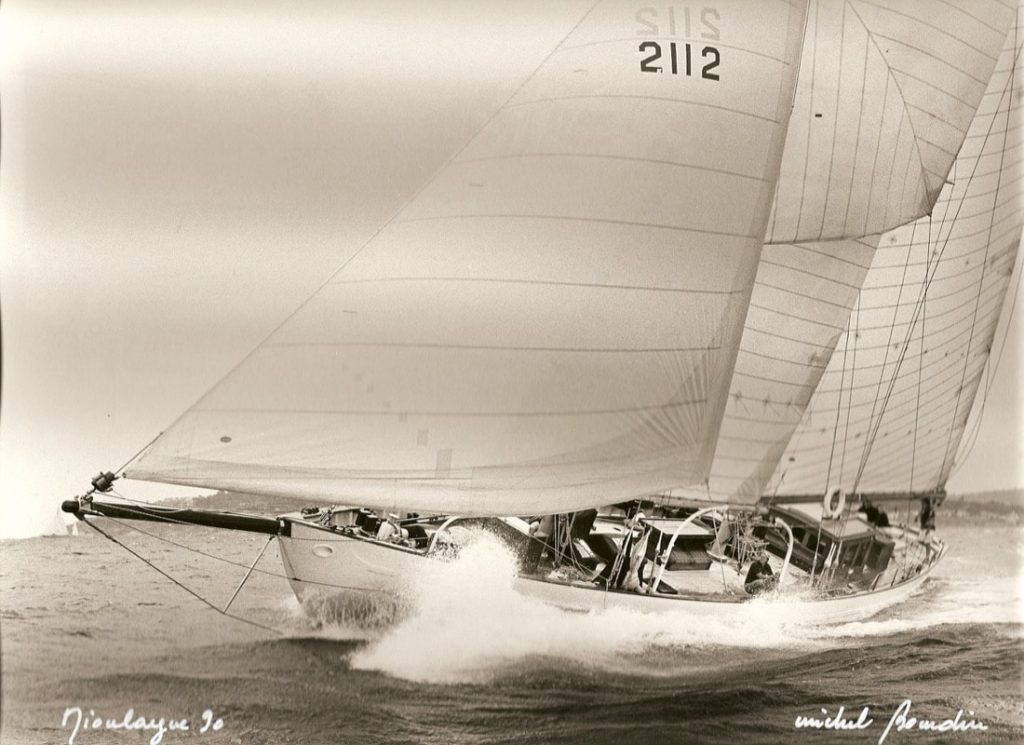
Having sailed her across many seas from the Danish to the Swedish seas, from the Caribbean to New York and from New York to the English Channel, and having participated in the 1990 Nioulargue, Peter Phillips sold Orianda in 1991, for c. £400,000.000, to a Spanish real estate developer, Mr Bellnoch who brought her to Denia in Spain and used her as a family Sailing Yacht exploring the Balearics until 2008.
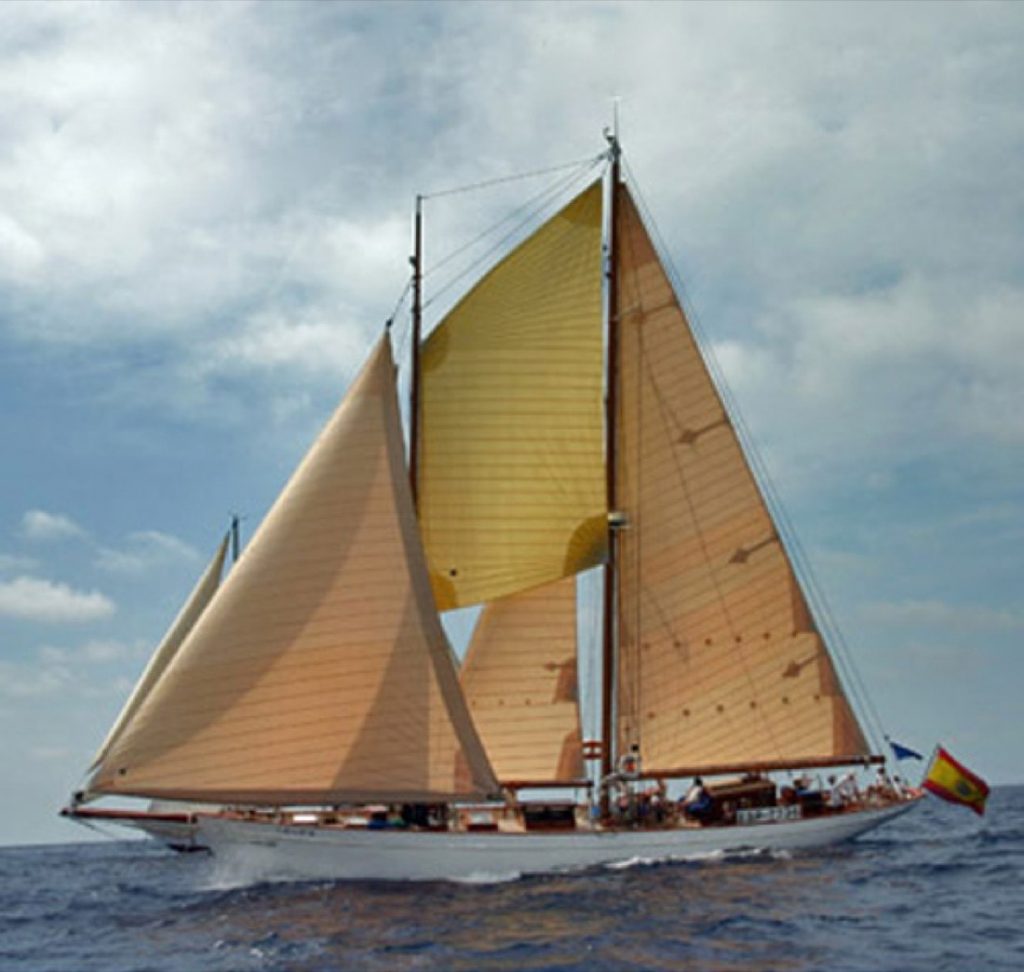
Cruising / Charter
Lifestyle
Interior
(1940’s) Ragna IV Interiors
(1950’s) Baron Raben-Levetzau Sailing Sabina
(1980’s) Orianda’s Interior and Deck House during the Ownership of Neal Peart
(1980’s) Orianda’s 1987 Fire & 1988 Restoration In West End, Tortola, British Virgin Islands during the Ownership of Peter Phillips
(1990’s) Orianda after Fire Restoration
Orianda 1937
Orianda through History from 1937
2010 Vele d’Epoca Imperia
Oscar Wilhelm Dahlstroem
1876 - 1962 Finland/Denmark
Practicing as both a yacht designer and a building architect, the first yacht Oscar Dahlstroem drew, was the 22-Square-Meter Singlan, in 1916 at the age of forty. He was born in Vaasca, Finland, on the Gulf of Bothania, and studied at a technical school. At Helsinki University, he studied to be a teacher.
Instead of teaching in Finland, Dahlstroem moved to Denmark in 1903. By 1908 he had been educated as an architect, and applied for and was granted Danish citizenship. In the 1920’s, self-educated in yacht design, he drew eight 6-Meters, as well as other boat types, including the large schooner Ragna IV, nowadays known as Orianda.
- Bent Aarre
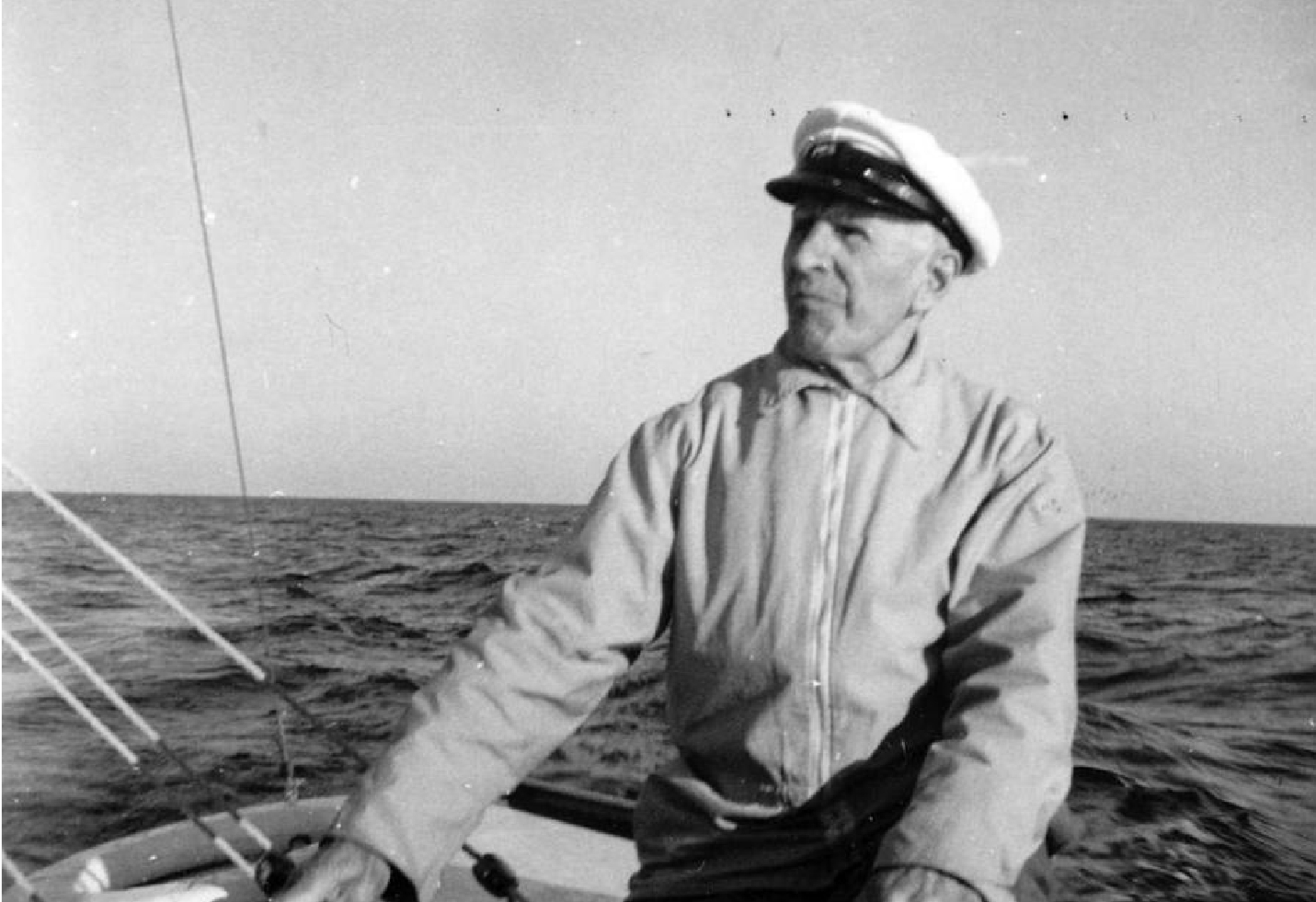
Orianda can accommodate up to 8 guests in 4 cabins along with three crew members.
Two double cabins with queen bed, each with an en-suite bathroom, are situated at stern. Forward of the saloon are two guest cabins with upper and lower beds. One of them can be converted into a double bed by closing the upper bunk. Each cabin is finished to the same high standard as the rest of the vessel. All staterooms have air-conditioning, plus opening deck hatches for light and ventilation.
Orianda comes equipped with state-of-the-art comfort and technology: Air-conditioning, Wi-Fi, Watermaker, Snorkelling Equipment, Flat Screen TV, Hi-Fi Surround Sound System throughout the entire yacht. All staterooms have opening deck hatches for light and ventilation.
Whilst exploring the magnificent surroundings of your charter destination, Orianda offers guests on board the opportunity to engage in a wide range of water based activities. From speeding through the ocean on water-skis, or taking on the elements with a wind-surf, to snorkelling in unique locations. We offer something for everyone, in a setting that will make lasting memories with your family and friends.
We distinguish ourselves by providing unique local cuisine on board. Each dish is carefully prepared using fresh produce sourced from and befitting the current location of the yacht, with an emphasis on healthy and nutritious ingredients. Alongside our excellent Mediterranean cuisine, the owner’s cellar, a collection of scrupulously researched wines and spirits, will make for an unparalleled culinary experience.
While during your journey no dish will be alike, our fully trained staff will be happy to cater to any of our guests’ dietary requirements or preferences.
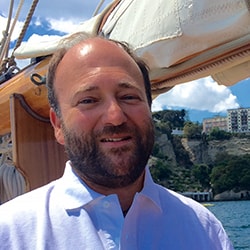
Sebastiano Marulli d’Ascoli
Captain
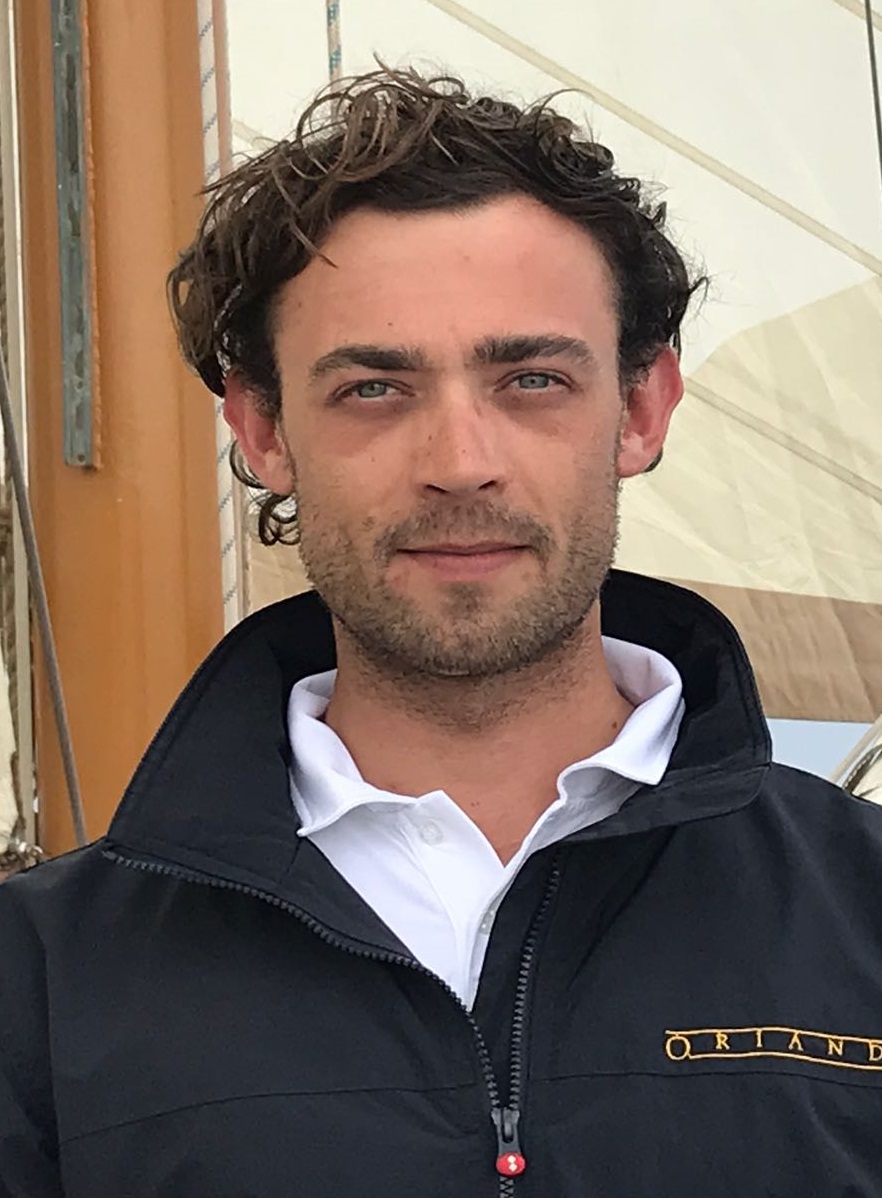
Alessandro Santoni
First Mate
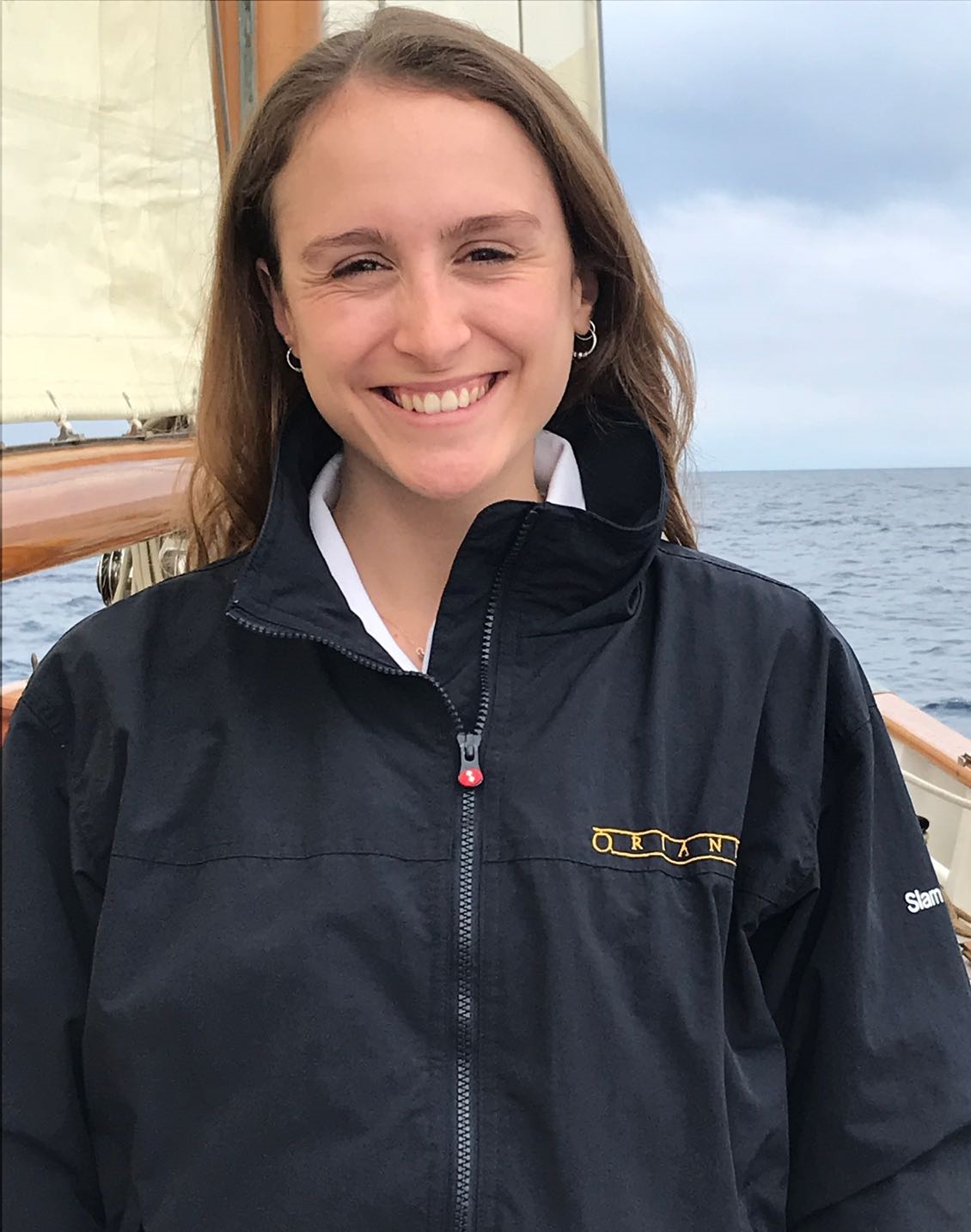
Francesca Webster
STEWARDESS


